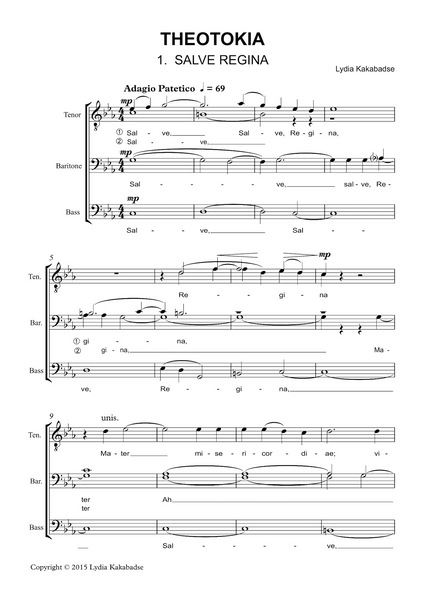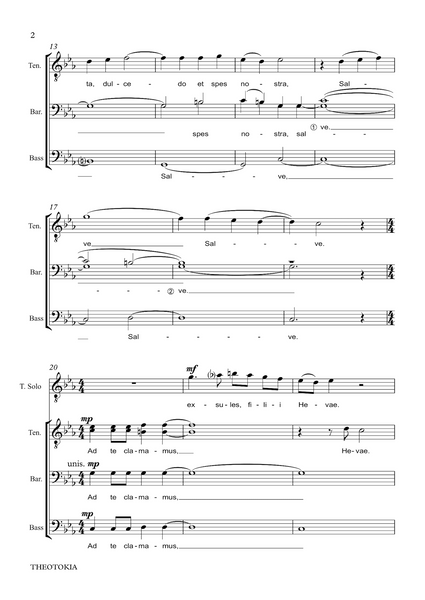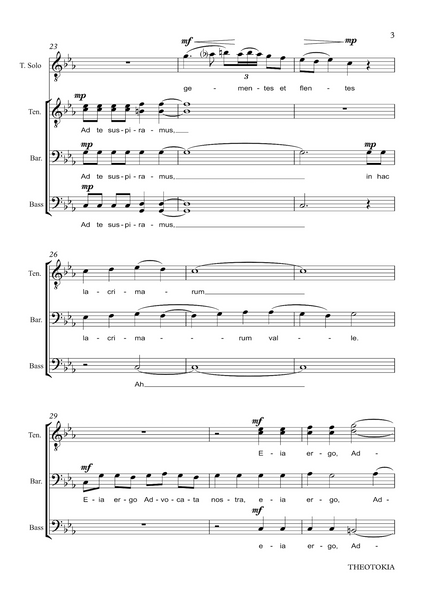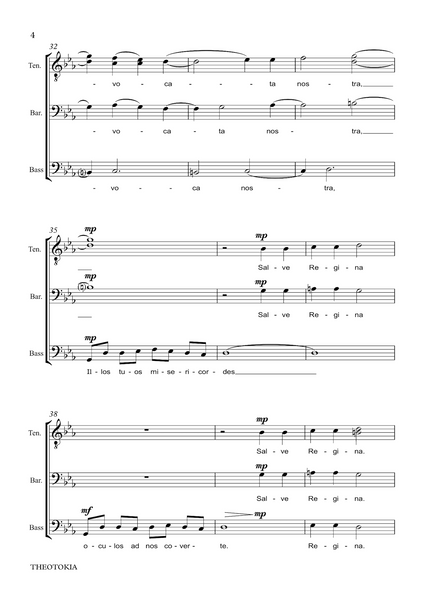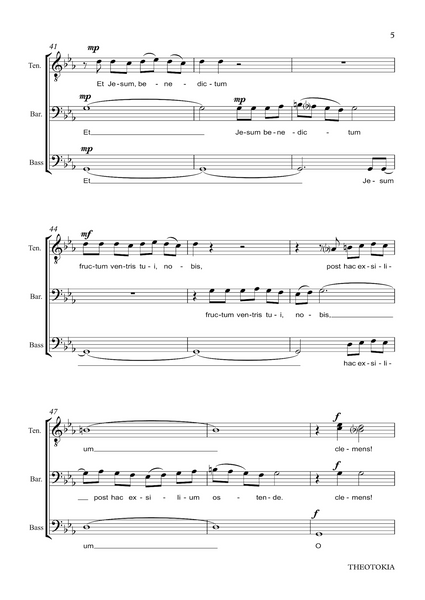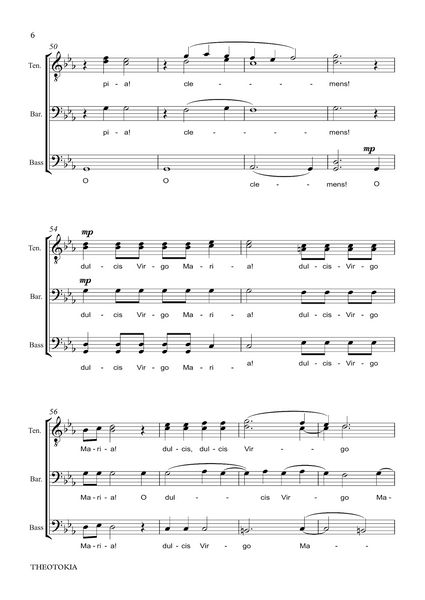Lydia Kakabadse: Theotokia – for male voice choir (NXP159)
This is a sheet music edition of Theotokia by the composer Lydia Kakabadse.
Marian hymns set to sacred Latin texts
Sheet music for male voice choir
Score: 27 pages
Duration: 13:09 minutes
Audio sample
Preface and programme notes
Completed in August 2015 following Cantica Sacra and Kontakia, Theotokia is my third choral work for unaccompanied male voice choir.
A theotokion, which is the singular form of theotokia, is a hymn dedicated to the Virgin Mary – the God bearer (theotokos). A theotokion is performed during the liturgy of the Eastern Orthodox and Eastern Catholic Churches, often on Marian feast days.
Made up of 5 traditional Marian hymns set to sacred Latin texts, the work incorporates slow moving rich harmonies, chanting, use of the double harmonic scale, diminished 7th chords, open triads and a sequential formation of plainsong.
The opening hymn Salve Regina, which is sung adagio patetico (slow tempo with great emotion), makes much use of diminished 7th chords as well as the double harmonic scale, especially in the high register solo tenor chant (reaching a top B), which alternates with the choir in responsorial style. In contrast, Ave Maria is light, fast, more melodious and free flowing, featuring an echo like effect each time the main theme is announced by the tenors entering after the baritones.
In the Magnificat, believed to be one of the earliest Marian hymns, each vocal part sings in plainsong style in alternate verses with the choir. Known as monophonic tonal sequence, the opening plainsong passage introduced by the tenors in verse 1 (later repeated in verse 7) is repeated by the basses an octave lower in verses 3 and 9 and repeated by the baritones pitched a 5th above the basses in verse 5.
This is followed by the solemn hymn O Sanctissima where plainsong and single voice lines accompanied by a bass drone are interspersed with the repeated choral refrain: ora pro nobis (pray for us). The closing hymn O Magnum Mysterium which, in keeping with its title has an air of mystery about it, features rich harmonies, chromatic progressions and bass drones, with the basses interacting with the baritones and tenors in an antiphonal manner. It ends with the tenors singing Alleluia softly – over an open triad – in a sequence of steps comprising the double harmonic G Minor scale.
Theotokia has been recorded by the Alumni of the Choir of Clare College Cambridge on the Divine Art label and is included in my album Cantica Sacra.







